
Public relations codes of ethics
IABC Code of Ethics for Professional Communicators PRSA Code of Professional Standards
Because public relations has roots in journalism and many of its practitioners were once journalists, there is an unfortunate tendency to apply journalism standards to public relations. It is, however, misguided and unfair to both professions. Despite using similar skills, the two fields are fundamentally different and seek different ends. Their ethical standards are also very different. That should not be interpretted as meaning that one of them is better than or worse than the other; they’re just different, and it is important to understand those differences.
PR and journalism have some similarities, but . . .
The Society of Professional Journalists (SPJ), the Public Relations Society of America (PRSA), and the International Association of Business Communicators (IABC) ethical guidelines all agree about the importance and value of such key concepts as truth, accuracy, fairness, human rights, freedom of speech, and democratic principles. But, that can be somewhat misleading.
The underlying differences between public relations and journalism are far more basic and far more critical than these similarities in what they value.
According to their own professional codes and standards, there are fundamental differences in whom they represent and whose well-being they most directly serve.
Journalism serves the general public, and journalists are expected to act in the public’s best interests even if such actions have detrimental effects on their employers.
Public relations, in contrast, serves the specific organization or client who is paying the practitioner to build and manage relationships that help that organization/client achieve its goals.
Principled public relations practitioners and organizations such as PRSA and IABC which they have established are quick to append the caveat that even though public relations is meant to serve the needs of its clients/patrons, practitioners are simultaneously expected to refrain from any action that would have a deterimental effect on the general public.
Given this fundamental difference in orientation, it’s inevitable that the specific standards which govern practitoners actions would have to be different. As stated in the lead paragraph, this doesn’t mean that one set of standards is inherently better or worse than the other. Nor does it mean that one group of professionals is more or less ethical than the other. What it does mean is that practitioners should be judged by the standards of their own profession and not by those of another field.
Some actions that are very appropriate and commendably ethical for a public relations practitioner would be viewed very differently and be condemned as unethical by the SPJ if they were performed by a journalist. Conversely, some highly regarded practices in journalism would be considered inappropriate and unprofessional according to PRSA or IABC standards if they were performed by a public relations person.
Journalists primarily serve the public’s right to know.
Begin your comparison of the differences in journalism and public relations ethics by reviewing the Society of Professional Journalist’s Code of Ethics at the following Web site.
SPJ Code of Ethics
http://www.spj.org/ethics_code.asp
It outlines and explains the mainstream professional view of what are currently considered to be the acceptable norms of behavior for reporters, photographers, editors and other journalists working in the United States. But, don’t jump immediately to the lists of prohibited behaviors and don’t focus solely on the distinctions between what’s acceptable and what’s unacceptable. Start with the preamble and get a clear sense of to whom the professional journalists say they owe their primary allegiance and what they see as their over-riding purpose. Then you can go on to consider the values journalists say they espouse in more detail and in an appropriate context.
Accepting the code at face value, the needs and interests of the public always come first. They are even supposed to be placed before the needs and interests of the journalists’ employers.
Public relations people primarily serve their clients’ needs.
The clearest evidence of the difference between journalism and public relations’ standards and values is found in the Public Relations Society of America’s Code of Professional Standards which is on-line at the following link.
PRSA Code of Professional Standards
http://www.prsa.org/codeofethics.html
Wade through the introductory comments until you reach the PRSA Member Statement of Professional Values which “presents the core values of PRSA members and, more broadly, of the public relations profession,” presumably in order of importance. It clearly indicates that advocacy for clients/employers is the primary purpose and value of public relations. It does, however, also noted that this advocacy should be done responsibly and in the public interest.
Other public relations related organizations’ codes of ethics used to be similarly explicit, but all have undergone revision — and, in my personal opinion, watering down — within the past decade. They now seem less open and less willing to admit public relations’ role as an advocate for its clients and to have an over-inflated — and perhaps unrealistic — emphasis on “the public welfare”.
Consider, for instance, the following statement from the pre-1995 International Association of Business Communicators Code of Ethics:
“Communicators should encourage frequent communication and messages that are honest in their content, candid, accurate and appropriate to the needs of the organization and its audiences. (emphasis added)
Now, compare that concise, direct statement to the current but much more ambiguously worded International Association of Business Communicators Code of Ethics for Professional Communicators. Although the practitioner’s obligation to the client is frequently implied or alluded to in this version of the code, it isn’t fully and directly admitted anywhere.
IABC Code of Ethics for Professional Communicators
http://www.iabc.com/members/joining/code.htm
For better or worse many professional codes have been recently revised.
Why, you might ask, did so many professional organizations, including PRSA, IABC, and SPJ, change their codes of ethics during the 1990’s?
In part, it was because many of the codes were old and hadn’t been reviewed or revised in decades. Revisions were overdue.
In part, it was because of legal concerns that grew out of a few high-profile lawsuits that disgruntled practitioners filed against professional organizations which had publicly cited them or imposed sanctions on them for violating ethical standards. The professional organizations lost some of these cases and were held liable for damaging the individual’s professional reputation. The reasons for these courtroom losses were attributed to the belief that the then-existing codes of ethics were unenforceably vague and/or lacking in due process protection for alleged violators.
And, in large part, the changes were undertaken out of concern for the profession’s image and its reputation. They were, quite simply, changed for public relations purposes.
To read more on Public Relations Society of America code of ethics click on picture.

Examples of a Code of Ethics for Business
A code of ethics, also called a code of conduct or ethical code, sets out the company’s values, ethics, objective and responsibilities. A well-written code of ethics should also give guidance to employees on how to deal with certain ethical situations. Every code of ethics is different and should reflect the company’s ethos, values and business style. Some codes are short, setting out only general guidelines, and others are large manuals, encompassing a huge variety of situations.
Kraft
The Kraft code of ethics contains just 10 short rules of ethical behavior that all employees must follow. The introduction to the Kraft code of ethics suggests that employees should let values guide their actions in all cases. The code also stresses that if something seems wrong, it should be addressed directly. The code includes a speaking-up policy that requires employees to speak up if they are aware of any violations of the code, even those they have committed themselves. The 10 rules are: Make food that is safe to eat; market responsibly; treat people fairly; respect the free market; compete fairy; respect the environment; deal honesty with the government; keep honest books and records; never trade on inside information; give Kraft Foods your complete business loyalty.
Verizon
The Verizon code of ethics is a lengthy document that contains four short core values, followed by 16 pages of specific rules and guidelines to follow in certain situations. The core values are integrity, respect, performance excellence and accountability. The specific guidelines cover situations, such as how to deal with workplace violence, alcohol use and harassment. They also cover areas of integrity and fairness, such as how to avoid conflicts of interest and how to safeguard company information. There is also a section on protecting Verizon’s company assets, including what to do in cases of sabotage and how to create accurate records.
Related Reading: Code of Ethics in a Salon
Colgate-Palmolive
The Colgate-Palmolive code of ethics is a long document, but is broken down into individual areas of conduct. The code is intended as a guide to all daily business interactions and is used in conjunction with the company’s business practice guidelines. The code covers 10 areas, including: Our Relationship with Each Other; Our Relationship with the Company; Our Relationship with Consumers; Our Relationship with Government and the Law; Our Relationship with Society and Our Relationship with the Environment.
Baylor College of Medicine
The Baylor College of Medicine, in Houston, has a short code of ethics that sets out basic rules and refers employees to other guidelines for more detail. For example, the code instructs all employees to follow Baylor’s Mission Statement, Compliance Program and Conflict of Interest policy. The code includes basic guidelines for how employees should handle business conduct; financial and medical records; confidentiality; Baylor property; the workplace environment; and contact with the government.
Professional Codes of Ethics
Codes of ethics are statements of principles agreed to by professional organizations that are intended to guide members in moral decision making. The statements are designed to aid individuals as they navigate their daily professional lives, and to reassure the public and their clients that the profession as a whole adheres to high standards of conduct and has a system of accountability for those who do not conform.
As a general rule, any self-regulating profession that serves the public has a duty to adhere to a professional code of ethics. Occasionally the requirement to belong to the professional group and follow its code of conduct is laid out in legislation, as is the case with professionals guided by the rule of law, including doctors, dentists, lawyers, police officers, social workers and psychologists. However, other professions, such as journalism and public relations, develop codes of conduct voluntarily to engender public trust and goodwill toward their chosen field, and to encourage uniform ethical standards and professionalism within their ranks.
Ethical Codes in Public Relations
Origins of PR ethics and the Hill & Knowlton controversy
Public relations professionals have several roles. They disseminate information on behalf of their clients, provide advice about the public impact of their clients’ decisions and help resolve conflicts between both parties. These roles require PR professionals to constantly balance the needs of their employers against the public’s right to honest and fair dealing. As such, ethical dilemmas are part of their daily practice and professional codes of conduct can provide guidance and enhance public trust in the public relations profession. These codes invariably demand honesty, accuracy, loyalty and principles of fairness and non-competition among members, however each professional organization refines its own code according to the environment in which it operates.
Discussion about the need to enforce a code of ethics for public relations professionals intensified in the early 1990s, following revelations about questionable testimony during United States congressional hearings in the lead-up to the first Gulf War. A 15-year-old girl known only as “Nurse Nayirah” provided evidence to the Human Rights Caucus of the United States Congress in October 1990, suggesting that while volunteering as a refugee in the maternity ward of a hospital in Kuwait City, she had witnessed Iraqi soldiers throwing babies out of incubators and leaving them to die. The testimony was important to the George Bush administration of the time, which was urging military intervention in Kuwait where Saddam Hussein’s Iraqi army had invaded and exiled the Kuwaiti government. The girl’s story about “incubator babies” was widely reported and used at least a half a dozen times in presidential speeches intended to build domestic support for the assault on the Persian Gulf, which went ahead in 1991.
Following the war, human rights groups challenged and eventually discredited this critical testimony. The girl was revealed as Nayirah al-Sabah, a member of the Kuwaiti royal family, in fact the daughter of Saud bin Nasir Al-Sabah, Kuwait’s Ambassador to the United States. Her testimony was connected to a group called Citizens for a Free Kuwait, an organization that spent millions of dollars hiring Washington’s biggest PR firm, Hill & Knowlton to win support for the Kuwaiti cause.
Public relations professionals acknowledged that the troubles surrounding Hill & Knowlton tarnished the reputation of the industry as a whole, prompting calls for PR firms and their employees to be held accountable for failing to adhere to the code of ethics prescribed by the Public Relations Society of America, the industry’s largest membership group. The PRSA’s code of ethics requires members to report ethical violations when they occur, and the PRSA board has the power to discipline or expel members for failing to live up to its code, however, membership in the PRSA is not a prerequisite for practicing as a PR counsel.
Professional Public Relations Groups
The Public Relations Society of America (PRSA) is one of dozens of professional PR trade associations in countries around the world, including theCanadian Public Relations Society, the Public Relations Institute of Ireland and the Chartered Institute of Public Relations in the UK, all of which have their own code of conduct for members. Most belong to the Global Alliance for Public Relations and Communications Management , an organization that seeks to share ideas and ethical best practices among its members.
Global Ethics Protocol on Public Relations
The Global Alliance provides sound guidance for member agencies on ethical behavior through its Global Ethics Protocol on Public Relations, written in 2002. Member societies have incorporated the principles of this protocol in their own codes of ethics.
The Global Ethics Protocol contains, among other things, a declaration that members work to enhance the reputation of the PR business by remaining objective and by accepting a duty to a broader society than the client he or she represents.
It also requires members to pledge:
- To conduct ourselves professionally, with integrity, truth, accuracy, fairness, and responsibility to our clients, our client publics, and to an informed society;
- To improve our individual competence and advance the knowledge and proficiency of the profession through continuing education and research and where available, through the pursuit of professional accreditation;
- To adhere to the principles of the Global Protocol on Ethics in Public Relations. (1)
The protocol also requires members to adhere to high standards of honesty, integrity, expertise and loyalty in their work.
Impact of Social Media
The Chartered Institute of Public Relations (CIPR) in the UK recently added an advisory note its code of conduct to include Social Media Guidelines, warning members about special issues pertaining to networking sites on the Internet. Social networking sites including blogs, facebook, twitterand youtube are widely used and trusted by many target market audiences, and allow information to be circulated globally in rapid fashion. The CIPR encourages members to maintain its standards of honesty and non-competition while using social media, and warns them about the danger of misusing intellectual property, violating disclosure agreements, the possibility of defamation and invasion of privacy.
Difficulties Enforcing a PR Code of Ethics
While PR groups do set out codes of ethics for their members, it is difficult to enforce them. Many PR professionals simply don’t belong to trade groups, and neither do their employers. Membership of these groups is composed of individuals, not companies or organizations, which means companies that operate unethically from a public relations perspective are beyond reproach.

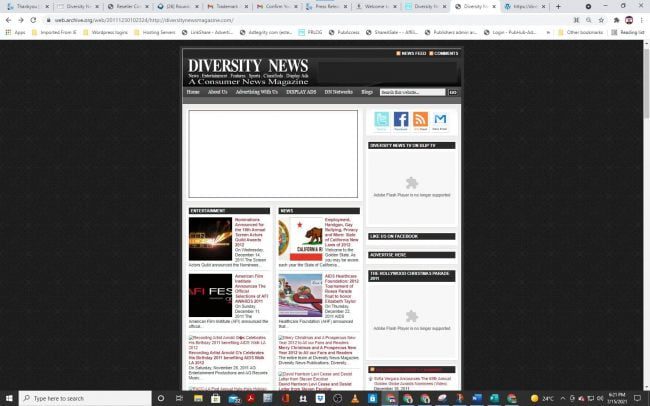
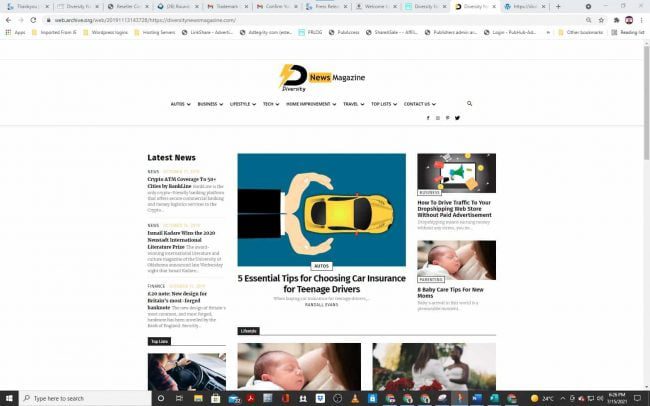
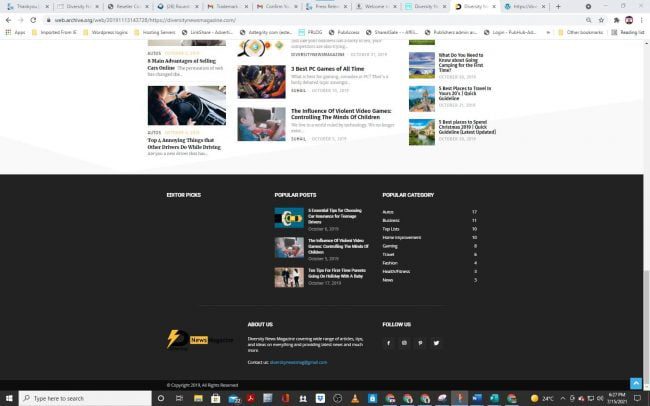
 Domain squatting is
Domain squatting is 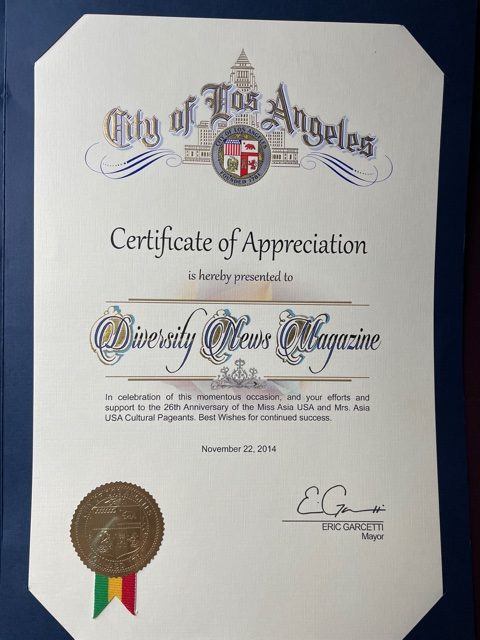 For those who does not know what Cybersquatting means, it means the practice of registering names, especially well-known company or brand names, as internet domains, in the hope of reselling them at a profit.
For those who does not know what Cybersquatting means, it means the practice of registering names, especially well-known company or brand names, as internet domains, in the hope of reselling them at a profit. 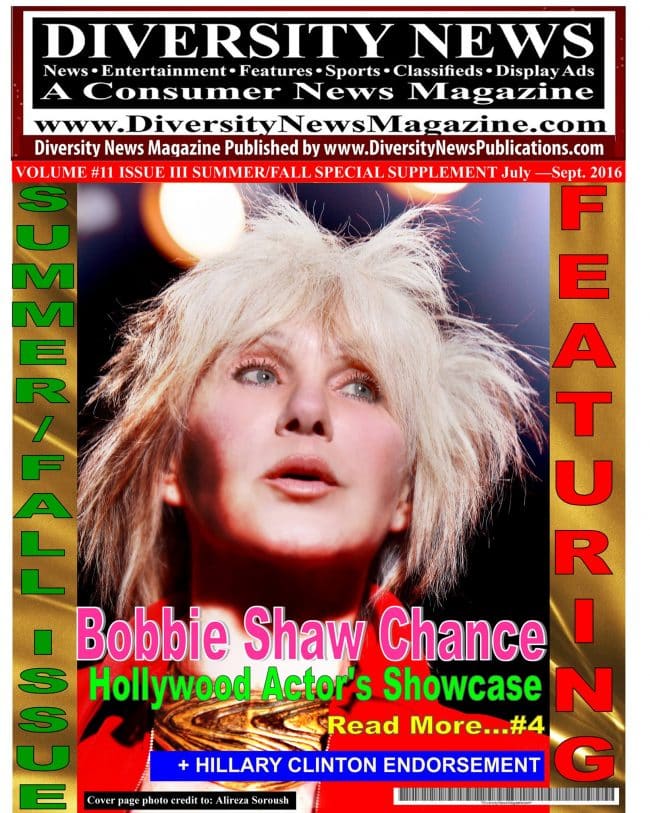 Mr. Escobar has been keeping an eye on his domain and because he keeps getting emails from former readers, partners, affiliates and colleagues asking if he is still in charge of Diversity News Magazine Dot Com. So after consulting with various colleagues, on 3-31-2021,
Mr. Escobar has been keeping an eye on his domain and because he keeps getting emails from former readers, partners, affiliates and colleagues asking if he is still in charge of Diversity News Magazine Dot Com. So after consulting with various colleagues, on 3-31-2021, 
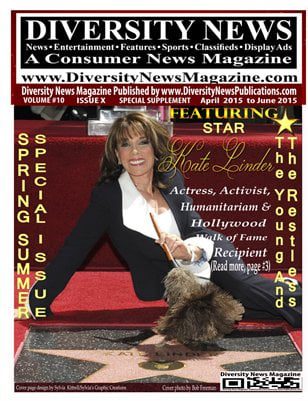

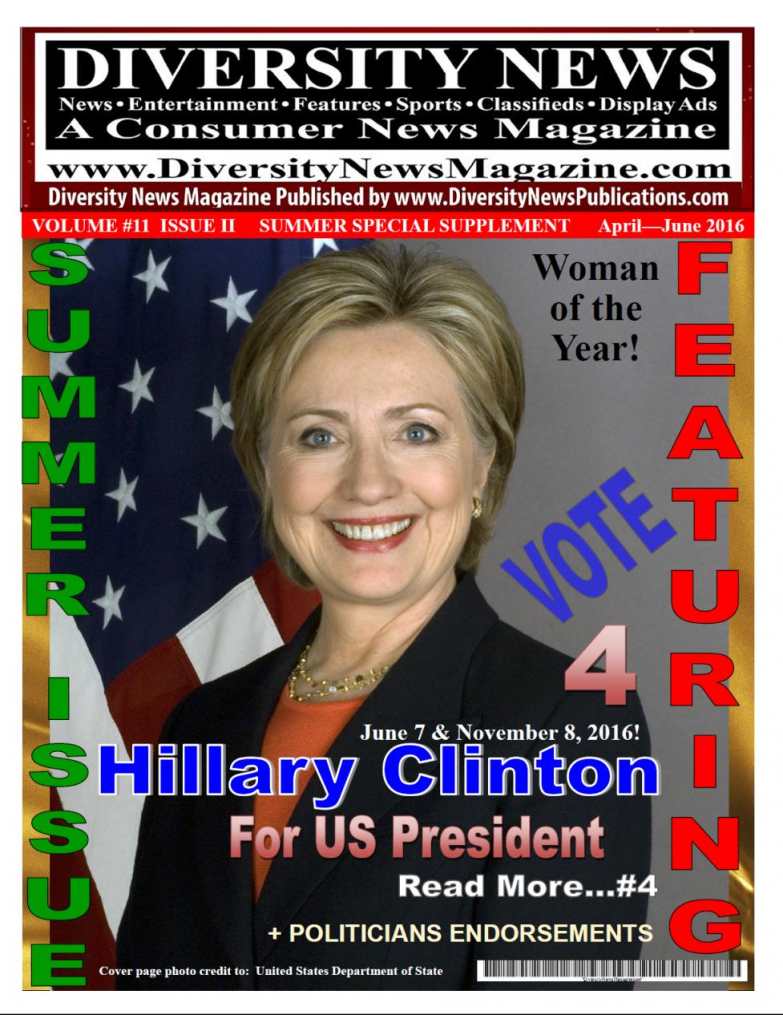 For those of you reading this press release let me tell you that Sara John or any aka’s she may use is not the owner of Diversity News Magazine Dot com
For those of you reading this press release let me tell you that Sara John or any aka’s she may use is not the owner of Diversity News Magazine Dot com 





